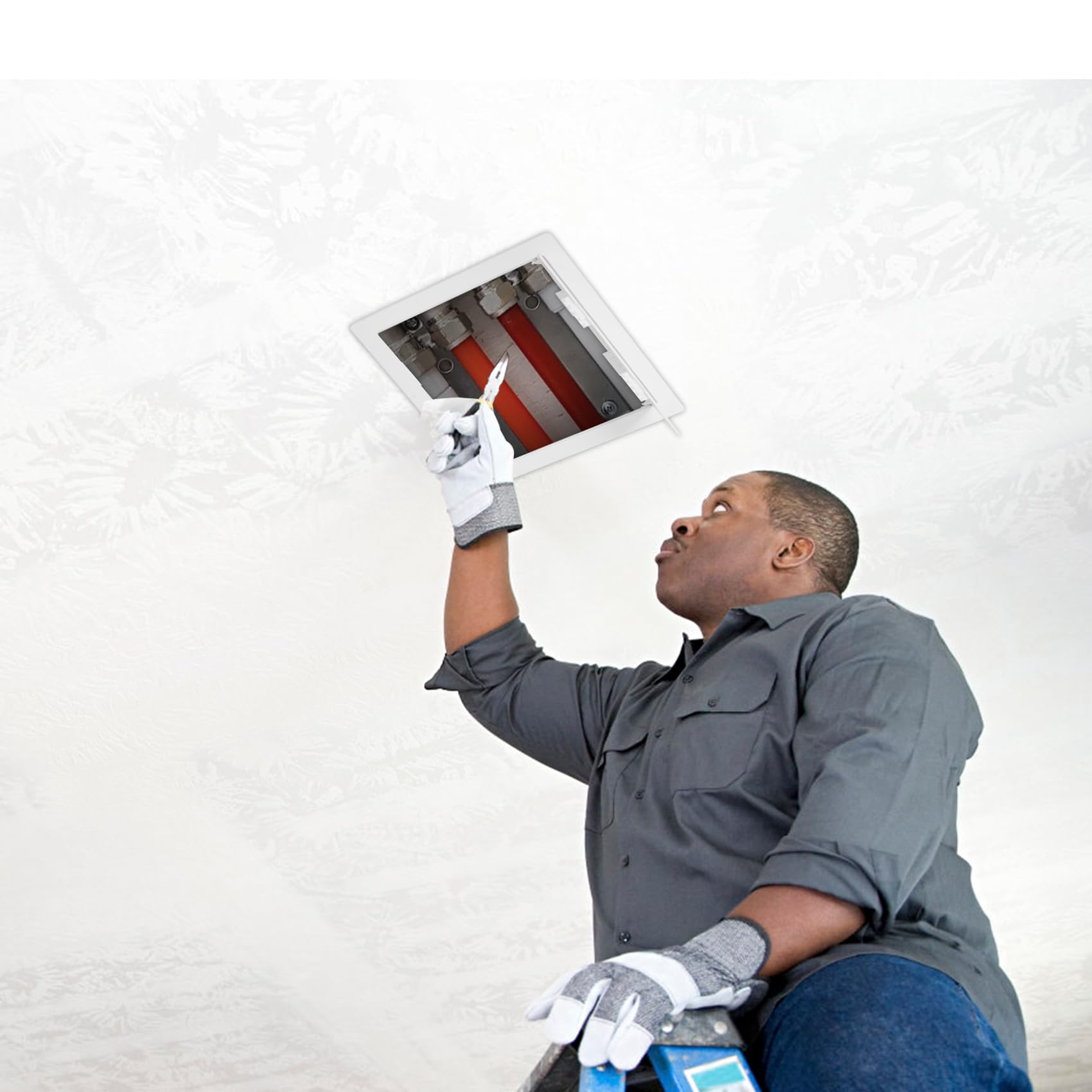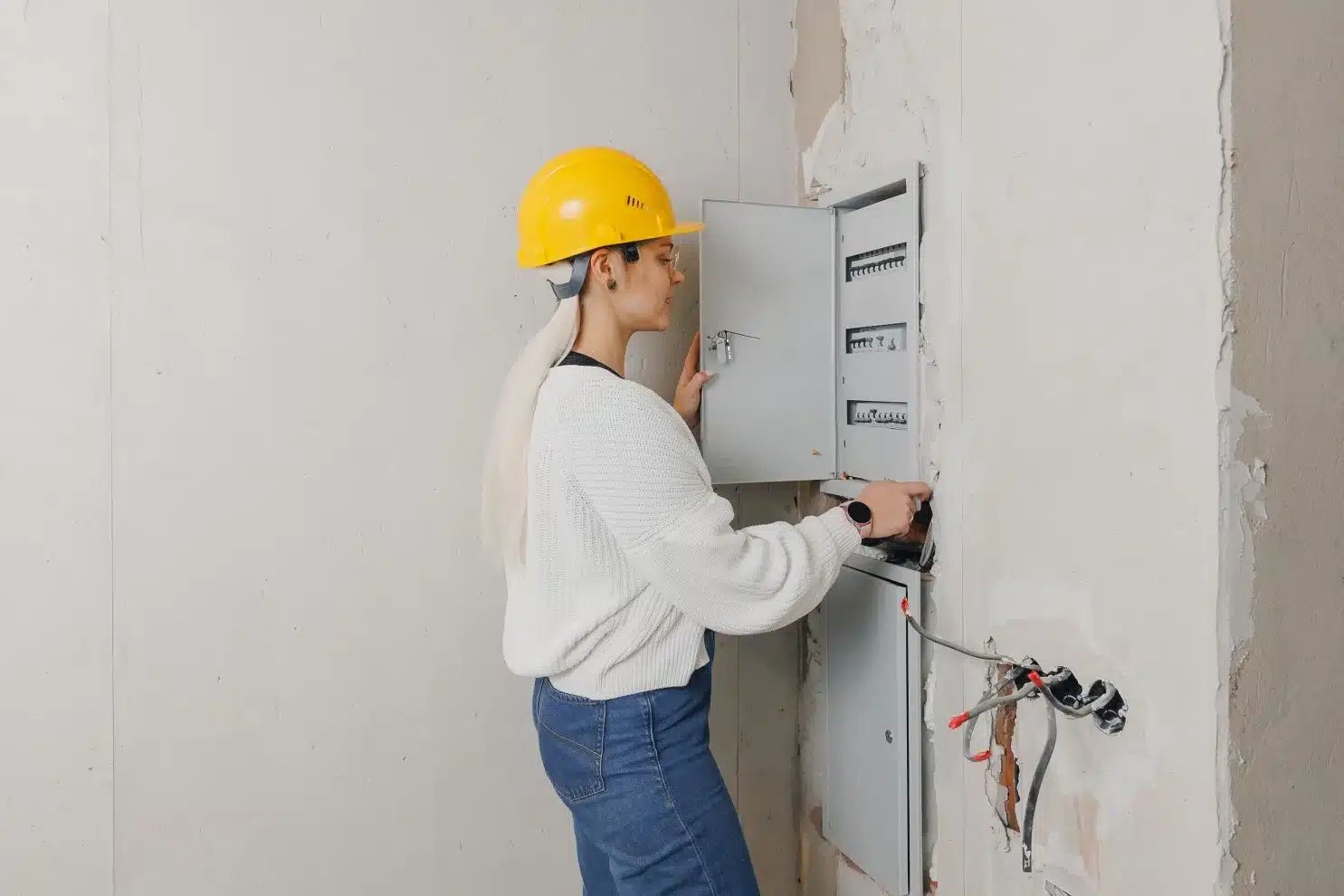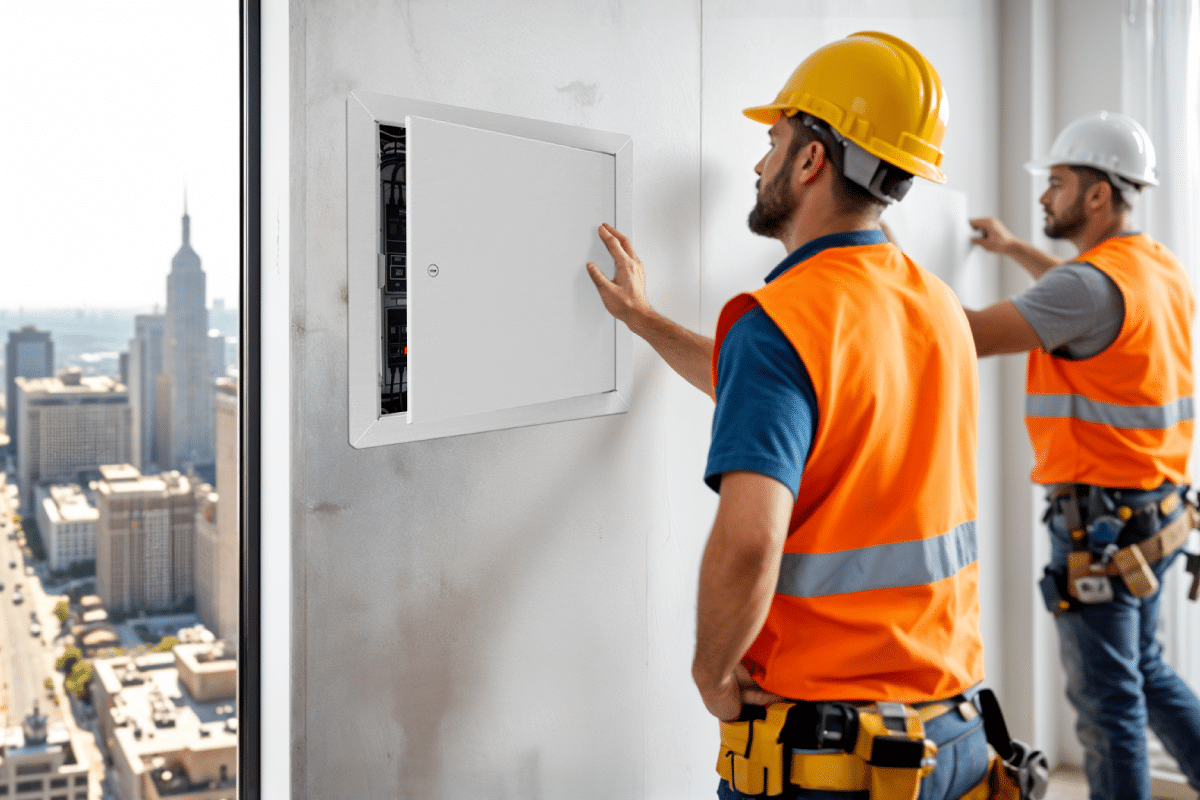Access doors play an important role in building design as they provide convenient access to concealed spaces for maintenance and repairs. But simply cutting a hole and slapping in a door won’t do.
Proper selection and installation are crucial for optimum functionality, polished appearance, enhanced safety, and building code compliance, all of which this article will cover, no pun intended.
Types of Access Doors and Key Features
There are various types of access doors, each designed for specific purposes:
General-Purpose Access Doors
These are versatile and used in many different settings. They are made from various materials, like steel or aluminum, and usually come in different sizes and finishes.
Drywall Access Doors
Designed primarily for drywall installations, drywall access panels blend seamlessly with the wall. They are lightweight and often have a paintable surface.
Fire-Rated Access Doors
Fire-rated doors are some of the hottest access panels out there today, and for good reason. They are crucial for areas where fire resistance is needed. They are made from fire-resistant materials and tested to withstand high temperatures.
Depending on their fire rating, they deter the spread of fire for a specific period, usually between 45 to 180 minutes.
Acoustical Tile Access Doors
Ideal for spaces with drop ceilings or acoustical tiles, these doors provide access while maintaining soundproofing.
Recessed Access Doors
Recessed access doors are set into the wall or ceiling and can accommodate tile or carpet installations, providing a flush, nearly invisible appearance. They are often used in high-end interiors where aesthetics is a design priority.
When choosing an access door, consider the material, size, finish, and any specific requirements, like fire resistance or soundproofing.
Importance and Function of Access Doors

Access doors may seem like a minor design element that is not worth paying attention to, but they are very important when designing buildings. They provide entry points to hidden areas, such as electrical panels, plumbing, and HVAC systems, without tearing down walls and ceilings. They make it easier to perform maintenance and repairs without causing any operational disruptions to a building.
Access doors also contribute to the building’s aesthetics by keeping these service areas tucked away instead of being eye sores.
Challenges of Installing Access Doors in Different Materials
Despite their benefits, access doors also come with challenges, especially when they involve installation in different materials. Here are a few of them:
- Limited Accessibility in Tight Spaces: Space constraints can sometimes make installation difficult. This challenge is common in areas with numerous utilities or small mechanical rooms.
- Aesthetic Disruptions: Installing access doors in high-end interiors can be challenging as they may disrupt the room’s visual appeal. Designers must be more thoughtful in choosing doors that blend well with the surroundings.
- Fire Safety Requirements: In areas where fire safety is a concern, installing fire-rated access doors is necessary. Make sure the panel’s fire rating meets or exceeds the surrounding area’s fire rating to not compromise its structural integrity.
- Material-Specific Challenges: Different materials can pose unique challenges. For example, steel doors might corrode in humid environments, while plastic doors are not as sturdy. Carefully examine the installation area and identify potential long-term challenges to come up with the best possible design solutions.
Best Practices for Installing Access Doors in Different Materials

To ensure the successful installation of access doors, check out the following tips:
Tip #1: Before you start, ensure compatibility between the access door and the material it will be installed in. Take accurate measurements to avoid misalignment.
Tip #2: There are certain hacks for different background materials. For drywall installations, use a drywall saw to cut an opening and secure the door frame with drywall screws.
If you’re installing on a tile background, use a tile cutter to create an opening, and ensure the door frame is flush with the tile surface. Use tile adhesive to secure the frame.
Lastly, when working with plaster, use a plaster saw to create an opening and secure the door frame with plaster anchors. Patch and smooth the surrounding plaster.
Notice that access door installation isn’t really rocket science. You just have to know which tools are most effective for the materials you’re working with.
Tip #3: Make sure the access door is level and aligned with the surrounding surface. Doing this will prevent unwanted gaps and give the surface a seamless appearance.
Tip #4: Use matching paint or finishes to blend the access door with its surroundings. Consider using concealed hinges for a clean look.
Best Practices for Ensuring Long-Term Durability
To make the access doors last a long time, follow these best practices:
- Choose durable materials: Go for materials that can withstand harsh conditions and resist corrosion, such as steel and fiberglass.
- Perform regular maintenance and inspection: Periodically check access doors for signs of wear and tear. Address issues immediately so things don’t get worse.
- Apply protective coatings and treatments: Protective coatings or treatments enhance the durability of access doors, especially in environments prone to moisture or chemicals.
- Address environmental factors: Consider the impact of environmental factors like humidity and temperature. Ensure access doors are designed to handle these conditions.
Wrapping It Up
By understanding the different types of access doors, their importance, and the best practices for installation and maintenance, architects and designers can guarantee functionality and aesthetics in their projects. Properly installed and maintained access doors contribute to a building’s overall performance and longevity.

